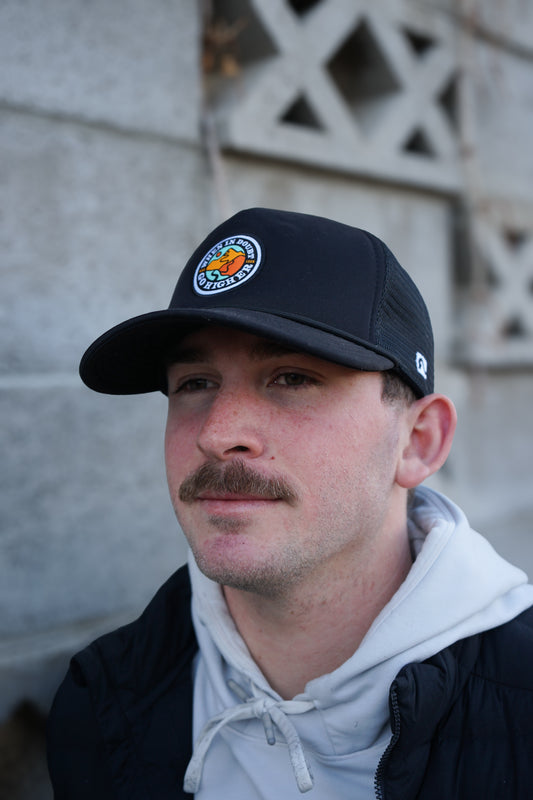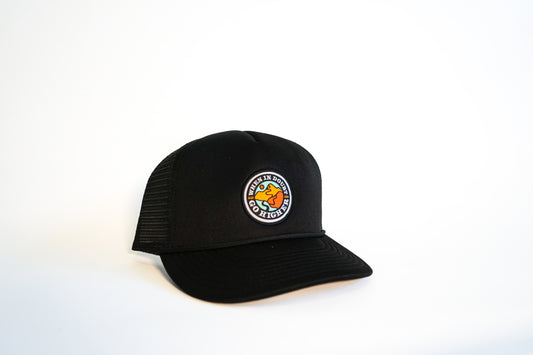By Gina Allman
My life began in ’02, when I bit the bullet, coughed up $500 and went through river-guide training on the Arkansas River. My mother cried when she heard I was camping out of my vehicle for the summer, and my father announced that I would be consorting with degenerates. I completed the boot-camp-like training, and the raft company I trained with hired me. Once I had access to the pro-deals, I bought a small, bright-red NRS dry bag. Perfect for extra ball caps, a splash top, sunscreen, ouch kit and maybe a granola bar or two. Over the next eight years of commercial boating, I had the bag on just about every overnighter, commercial day trip and private trip; if it involved a raft and the river, I had that dry bag. Eventually, it became the not-so-dry bag and was retired to the drag bag for beer on those multi-day desert trips where you feel like you’re rowing uphill (you know the ones).
Well, on a particular mad dash from Durango to the Arkansas River for a brief weekend boat trip, I met a doctor (a psychiatrist … go figure). Not only did he have a lucrative practice, he was a boater, emotionally damaged and unpredictable. Just how I like ’em. After a steamy back-of-the-truck session during a night at the local Arkansas guide camp he talked me into driving up to the South Fork of the Payette in Idaho. He tempted me with river-based sweet nothings, like, “The water would still be pretty high,” “there’s really good class III-IV” and “the water is so warm.” He offered up his truck, gas and raft to row. How could I say no? At that time, I had just started my “real job” as an accountant on the tax side for a local firm. Life took a turn for the mellow, so I relished the opportunity to throw myself in harm’s way. A trip to Idaho, with a stranger (a hot stranger), who’s clearly irresponsible and emotionally damaged … yes, please!
Two weeks later, we were headed up toward Idaho. After 16 hours on the road, we pulled into the Payette River Valley. In that part of Idaho, the sun didn’t set until about 10:30, so, even with our 8 p.m. arrival, we squeezed in a class III-V+ whitewater run known as “The Staircase.” Me with a center-rigged raft, a 12½-foot Super Puma and “The Doc” with his high-volume kayak. The river was incredible. The water was warm and busy, with big-ledge holes, mandatory moves and wave trains — everything a boater could want. We were both brimming with anticipation and excitement. We figured we could squeeze in at least three to four runs.
The next day, we hitchhiked a shuttle to do a run called “Canyon.” Canyon had one mandatory portage; other than that, it was a read-and-run, higher-volume, class III-IV. The mandatory portage was known as “Big Falls”; it was a class V+, 35-foot, cascading drop. Pro kayakers will run this rapid when the water drops down to about 500-600 CFS, and I have seen some “YouTube” footage of people running “Big Falls” in Creature Crafts at around 1,200 CFS. Other than that, everyone portages this rapid. The river was at 2,600 CFS on the day we decided to run it, which is considered a medium/high flow. The Doc told me he knew where to portage, and I trusted him. I mean, yeah, sure, “The Doc” is unpredictable and damaged, but suicidal? I didn’t think so.
Before launching, I made the decision to put ballast in the bow of the raft. The night before, on “The Staircase,” the 12½-foot raft kept getting tossed around by the large waves. To keep the holes and waves from tossing me around too much, I filled the old, trusty, bright red, not-so-dry, dry bag with rocks to act as bow ballast. I figured a little more weight in front would help me punch through those holes and over the waves. As we were boating down, we started talking about how the rapids all seemed a little “up-classed.” The doctor brought out his Julia Childs voice for the next horizon line. With each paddle stroke, he called out, “ooooh noooo another class IV ooooh.” Ten yards ahead of me, he dropped the horizon line. I started rowing hard to catch up with him. I noticed the horizon line seemed, well, rather dramatic. I then thought to myself, “He’s a doctor; this guy isn’t a dumb ass!” So I followed.
Once I crossed the other side of the horizon line, I started looking for my line. I looked left. I looked right. I couldn’t see a line. THERE WAS NO LINE!!! I suddenly realized I had rowed right into the mandatory portage, Big Falls Rapid. That hot, tingly, “oh-shit” feeling swept over me and panic reared its head. I decided to shove it down. Whether I liked it or not, I was running Big Falls Rapid and I figured I may as well try to keep my boat upright. The first drop looked like a huge vagina. Walls of water on each side, with a huge hole, followed by an enormously tall curler wave that looked like a big, angry, clitoris. This wave would surely flip my boat end-to-end. I stood up and rowed hard and furious. Once I hit the hole, I jumped to the front to keep the raft from flipping. Shortly (very shortly) thereafter, I started descending to the next drop.
Since speed and weight distribution seemed to help me get through the first drop. I jumped back to the middle of the boat, trying to grab hold of the oars in hopes of gaining some speed before hitting the second hole. I slipped and somehow fell right in between the boat and the frame. The only thing going through my mind was, “If this boat flips right now, I’m going to die.” I hit the second hole still trapped in between frame and boat. I felt the boat falling toward the second hole, water roaring all around me, the graceful slide of the raft descending into the mouth of the hole, followed by the violent lurch of my bow breaking through the bottom of the hole. And then I felt the boat being released. When I think back, I’m pretty sure my weight in the bottom of the boat actually was a huge factor in floating through that hole without flipping.
Using the oar frame for leverage, I pushed with my newfound, adrenaline-fueled strength and flung myself to the stern of the raft, dislodging my body from between boat and frame. I could see I there was another drop ahead, and it looked enormous. All I was thinking was, “Screw the oars — I’m just gonna high-side like a mutha … it’s survival now!” The last drop was awesome. I descended for about 10 feet into the biggest, river-wide hole I had seen yet. The raft got up on one side tube and stood straight up in the air. I was straddling the right side tube (the high side), riding it like a bucking bronco, watching the whole left side of the oar frame sink into the water. My bright red, not-so-dry, dry bag, filled with rocks, was dangling off the bow of the boat from a D-ring. As I sat there, five feet up in the air, straddling the tube, all I could think was, “This is it … I am going into one of the deepest, blackest, holes on this damned river.” Right then, the hole started surging and spit the raft out, right side up, sans my left oar.
As I floated calmly away, right side up, sitting where I was supposed to on the oar frame, with only one oar, I looked at my bright-red dry bag, filled with rocks and thought, “that’s one good-ass piece of gear.”





